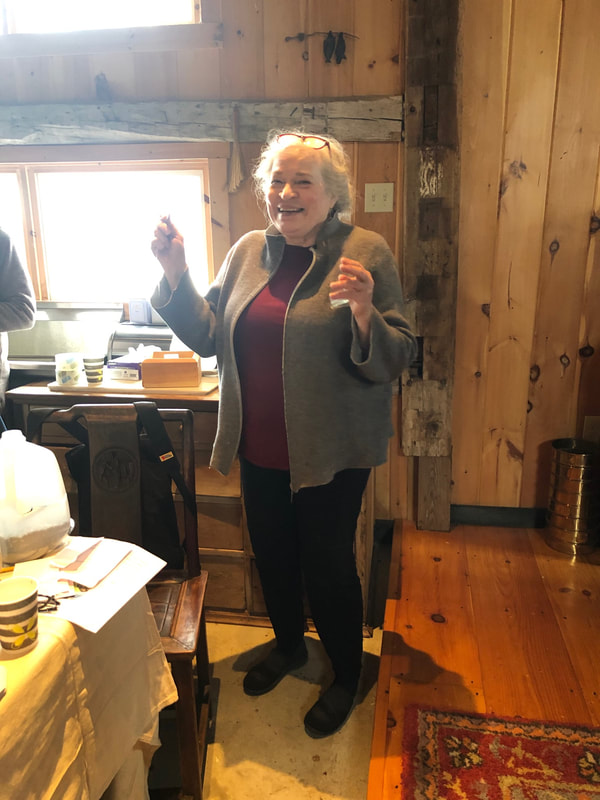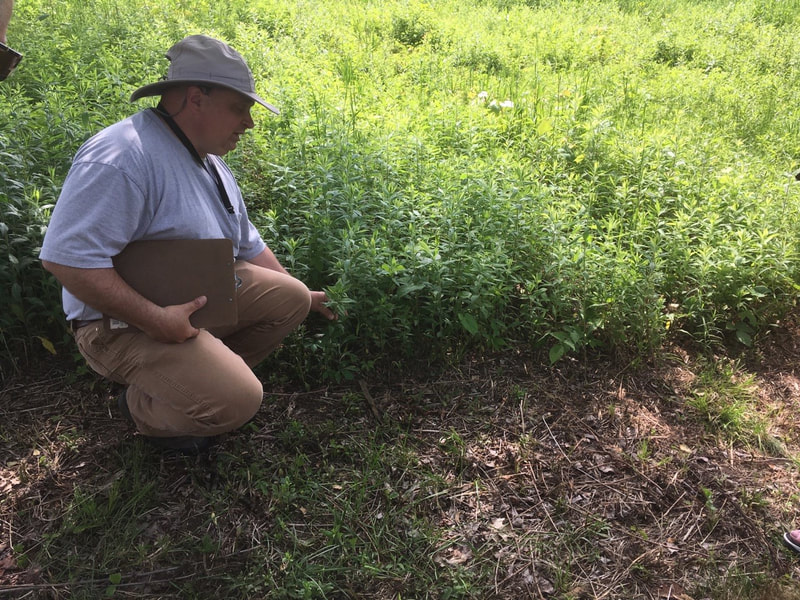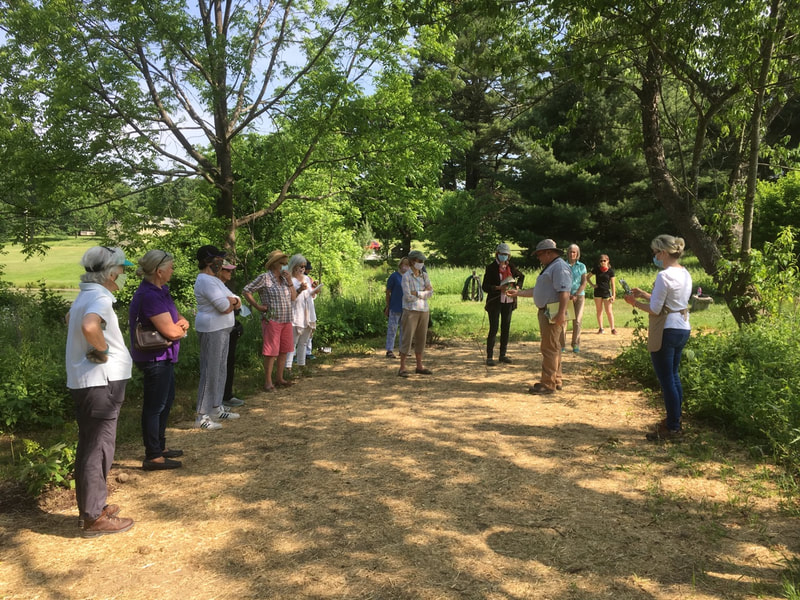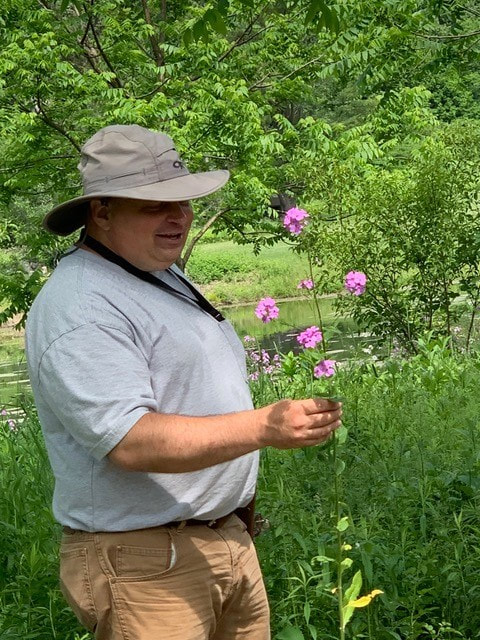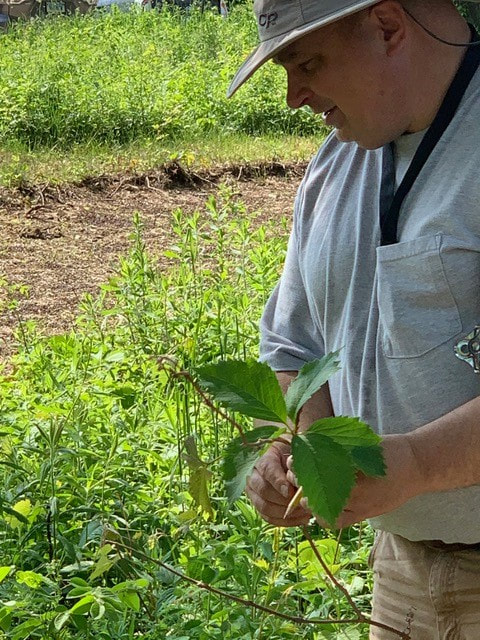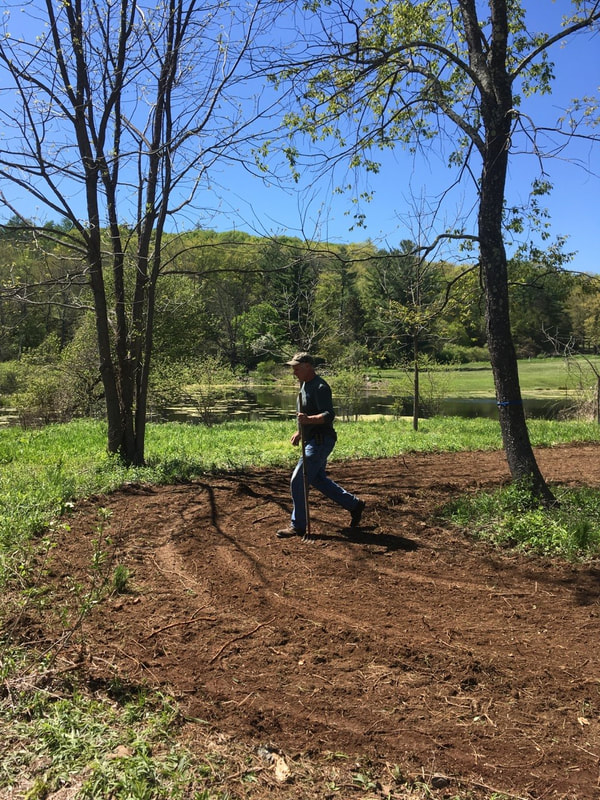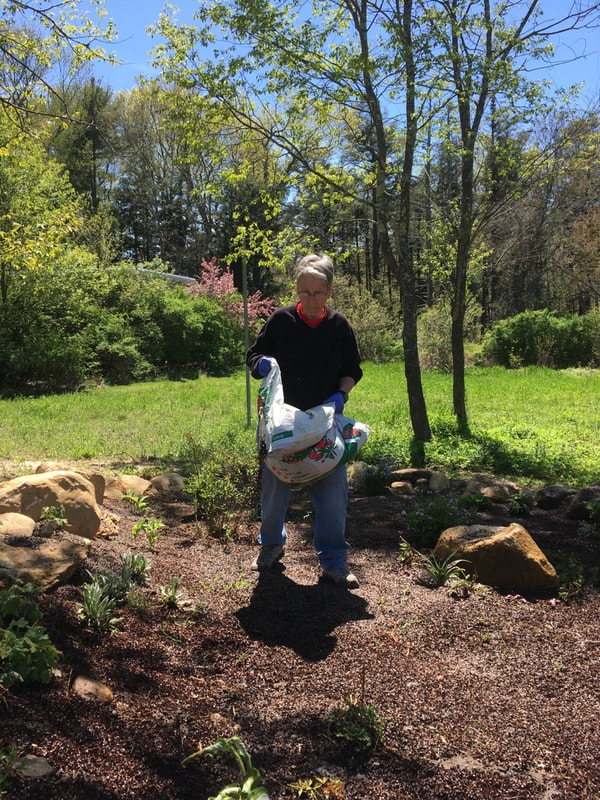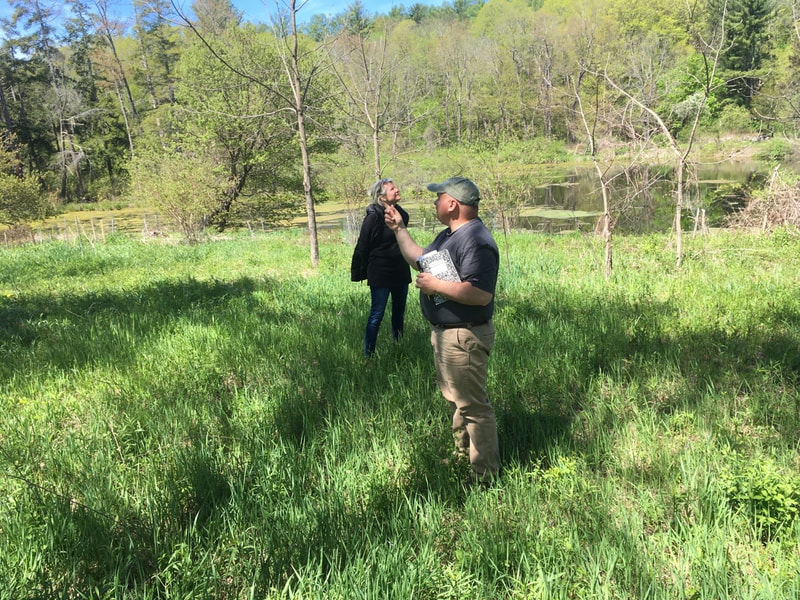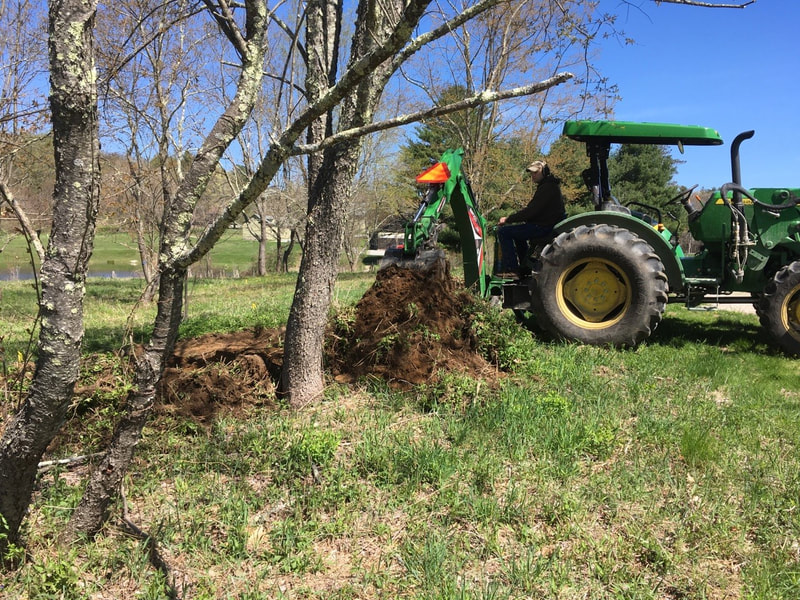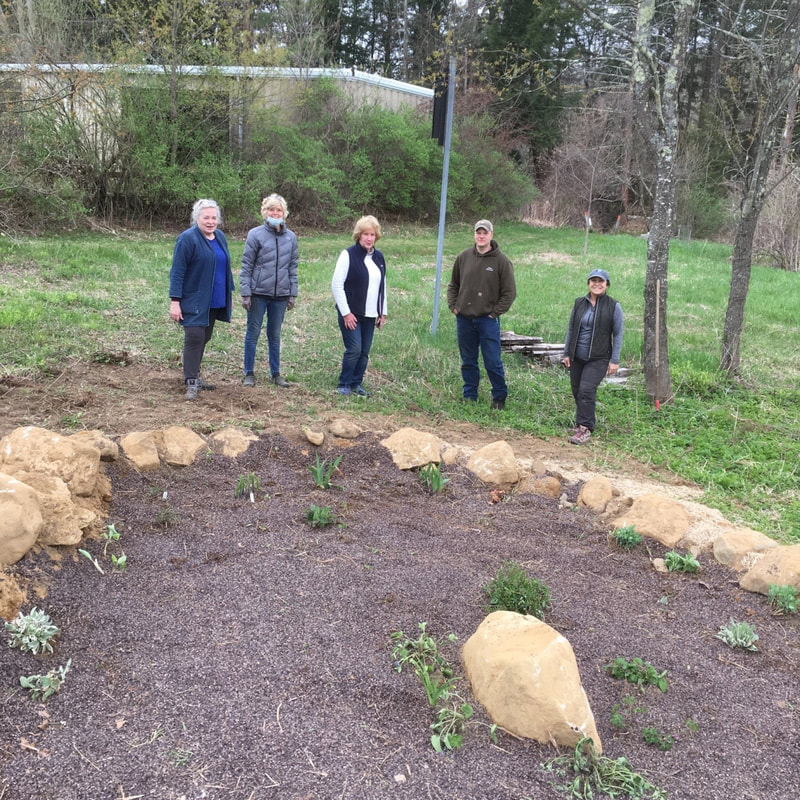The Conservation Committee is charged with arousing the interest of the Club and the community to the importance of conservation and the dangers of neglecting our environment.
The Committee develops interest and educates the club and the community on the importance of conservation and environmental awareness. Works with other organizations to sponsor lectures and projects on conservation. Plans one club meeting on conservation each year. These meetings may be open to the public. Organizes field trips to natural areas, sanctuaries, Audubon centers, arboretum, etc., with the program chairman and the visiting gardens chairman. Contacts appropriate officials of schools or other community groups to arrange educational projects within the limits of the budget. Oversees the LGC’s partnerships with the White Memorial Conservation Center including, but not limited to, liaison with the sixth-grade environmental education program and maintenance of the pollinator project. (from the Policies and Procedures Handbook)
The Committee develops interest and educates the club and the community on the importance of conservation and environmental awareness. Works with other organizations to sponsor lectures and projects on conservation. Plans one club meeting on conservation each year. These meetings may be open to the public. Organizes field trips to natural areas, sanctuaries, Audubon centers, arboretum, etc., with the program chairman and the visiting gardens chairman. Contacts appropriate officials of schools or other community groups to arrange educational projects within the limits of the budget. Oversees the LGC’s partnerships with the White Memorial Conservation Center including, but not limited to, liaison with the sixth-grade environmental education program and maintenance of the pollinator project. (from the Policies and Procedures Handbook)

Help Save Connecticut’s Migratory Birds
By joining Lights Out Connecticut, you can help to reduce the impacts of light pollution on birds, fish, insects, amphibians, reptiles, plants — and humans! You will also save energy and money, reduce your carbon emissions, safeguard your own human health, and help preserve views of the night sky!
By Taking the Pledge to go Lights Out, you become a part of the growing community of CT residents, businesses, schools, churches, and nonprofits who pledge to turn off unnecessary outdoor and indoor lighting from 11pm to 6am each night during peak bird migration (Spring: April 1 - May 31; and Fall: Aug 15 - Nov 15) to reduce the risks caused by light pollution.
By joining Lights Out Connecticut, you can help to reduce the impacts of light pollution on birds, fish, insects, amphibians, reptiles, plants — and humans! You will also save energy and money, reduce your carbon emissions, safeguard your own human health, and help preserve views of the night sky!
By Taking the Pledge to go Lights Out, you become a part of the growing community of CT residents, businesses, schools, churches, and nonprofits who pledge to turn off unnecessary outdoor and indoor lighting from 11pm to 6am each night during peak bird migration (Spring: April 1 - May 31; and Fall: Aug 15 - Nov 15) to reduce the risks caused by light pollution.
What has the Conservation Committee been up to?
Workshops
On April 28, 2022, a group of passionate growers came together at Diane Stoner's barn to learn from Grace Yagtug, and Kate Jamison about all things seeds. We discussed harvesting, storage and starting seeds at the appropriate times. Grace brought material (soil and clay) to make seed balls, and once again we got our chance to get our hands dirty as well as take home wildflower seed balls to throw into our gardens.
Click images for captions and larger view
Click images for captions and larger view
June 3, 2020 - we had two wonderful workshops on making Seed Balls for our Pollinator Garden. Nancy Post, Fran Devlin and Julia Battistoni (our White Memorial intern) joined us for the morning session.
Click images below for larger view and captions
Click images below for larger view and captions
In the afternoon, two of our new provisionals Crystal Carminati and Susan Fearey worked diligently with Annie Borzilleri, Susan Magary, Julia Metcalf, Kate Jamison and Grace Yagtug. Our combined efforts resulted in 412 Seed Balls! The Seed balls were created using Autumn blooming native species perennial and annual wildflower seeds, which we are going to use in the Pollinator Garden at White Memorial.
As far back as ancient Egypt, seed balls were used to restore farmland after the Nile’s annual Spring flood. In ancient Japan, they were known as Tsuchi Dango, or earth dumplings. Read more about the ancient history and the process of making Seed Balls.
Seeds Are Smart - On a foggy, cold and sleet filled day, February 13, 2020 Conservation and Horticulture got together and they had a fun and productive workshop on Seeds Are Smart! Nineteen intrepid women planted, watered and sealed 80 soil and seed filled gallon containers.
Click images below for larger view and captions.
Click images below for larger view and captions.
Conservation projects
The Litchfield Pollinator Pathway has opened many future opportunities for collaboration with LGC members.
The first project of the Litchfield Pollinator Pathway is to map locations visited by pollinators (ie your gardens, meadows, etc.). The data from the mapping will be invaluable for determining future conservation and Pollinator Pathway projects. We are all invited to use the EpiCollect5 app to add our gardens, or any other pollinator site, to the map. All the information on how to do this is below.
The first project of the Litchfield Pollinator Pathway is to map locations visited by pollinators (ie your gardens, meadows, etc.). The data from the mapping will be invaluable for determining future conservation and Pollinator Pathway projects. We are all invited to use the EpiCollect5 app to add our gardens, or any other pollinator site, to the map. All the information on how to do this is below.
- Click HERE for the interactive map of the Litchfield vicinity.
- Click HERE for more information on the group that started it all.
- Visit the Litchfield Pollinator Pathway Project web-page.
November 22, 2019, Litchfield Garden Club Initiates Bluebirds of Happiness Program: To continue its mission of educating and engaging the community in various areas of conservation, the Conservation Committee of The Litchfield Garden Club (LGC) has initiated a “Bluebirds of Happiness” program. Read more about the history of the program
 L - R: Rosie Furniss, Jane Hinkel, Fran Devlin and Cathy Fields.
L - R: Rosie Furniss, Jane Hinkel, Fran Devlin and Cathy Fields.
The Bluebirds of Happiness Project commenced in the Spring of 2020, with the installation of nine bluebird nesting boxes at the Tapping Reeve Meadow in Litchfield. The boxes will be placed in groupings of three with three boxes in each group, allowing adequate room for the nesting of other birds in addition to bluebirds. This method encourages ‘neighboring,’ which occurs when different bird families guard ‘neighboring’ nests while the parents forage for food.
The LGC plans to install one hundred bluebird nesting boxes over a two year period in the Litchfield area with the goal of providing enough habitat and food plant sources to encourage bluebird families to winter over in this zone. Bluebirds symbolize joy, prosperity and good health. Their colorful plumage is associated with blue skies and eternal happiness. A bluebird sighting is a harbinger of good things to come.
The “Bluebirds of Happiness” program is a collaborative effort between the LGC, The Litchfield Historical Society and Sharon Audubon Center all working together to create habitats for wildlife. If you have an open area of land in Litchfield, bordered by trees or hedges and wish to participate in this program, please contact the LGC at [email protected].
The LGC plans to install one hundred bluebird nesting boxes over a two year period in the Litchfield area with the goal of providing enough habitat and food plant sources to encourage bluebird families to winter over in this zone. Bluebirds symbolize joy, prosperity and good health. Their colorful plumage is associated with blue skies and eternal happiness. A bluebird sighting is a harbinger of good things to come.
The “Bluebirds of Happiness” program is a collaborative effort between the LGC, The Litchfield Historical Society and Sharon Audubon Center all working together to create habitats for wildlife. If you have an open area of land in Litchfield, bordered by trees or hedges and wish to participate in this program, please contact the LGC at [email protected].
The Pollinator Project: The Conservation Committee of the Litchfield Garden Club has “hands on” involvement in the Pollinator Project, which it planted and continues to maintain at White Memorial Conservation Center next to Ongley Pond. Garden Club members take turns making sure the garden is weeded and watered.
June 10, 2020, at the Pollinator garden with Jamie Fischer, surrounded by the beauty of the ponds and birds, in a vibrant green tender forest, with wild cherry and black walnut trees - Jamie did an amazing job identifying various native species and giving details about their unique identification, traits and uses in the landscape. Below is a list of plants we discussed with Jamie, including their Latin names.
Many, if not almost all the plants that exist right now in both the Rain Garden and the Pollinator Garden have come from members' gardens and generous spirits! We will keep working together to complete the garden planting and create an oasis of calm and great beauty.
There is activity at the garden every Monday, Wednesday and Friday mornings from 9am to 11am. Come and plant, water, weed, or visit.
List of plants: Wild Honeysuckle - Lonicera caprifoliaceae, Multiflora Rose - Rosa multiflora, Virgin’s Bower Clematis - Clematis virginiana, Bittersweet - Celastrus orbiculatus, Virginia Creeper - Parthenocissus quinquefolia, Wild Blackberries - Rubus fruticosus, Gout Weed - Aegopodium podagraria, Golden Alexander - Zizia aurea, Trout Lily - Erythronium americanum, Goldenrod – Solidago, Bedstraw – Galium, Garlic Mustard - Alliaria petiolate, Loosestrife – Lythrum, Dogbane - Apocynum cannabinum, Milkweed – Asclepias, Phlox - Phlox paniculata, Dame’s Rocket - Hesperis matronalis, Elderberry - Sambucus
Click images below for larger view and captions
Many, if not almost all the plants that exist right now in both the Rain Garden and the Pollinator Garden have come from members' gardens and generous spirits! We will keep working together to complete the garden planting and create an oasis of calm and great beauty.
There is activity at the garden every Monday, Wednesday and Friday mornings from 9am to 11am. Come and plant, water, weed, or visit.
List of plants: Wild Honeysuckle - Lonicera caprifoliaceae, Multiflora Rose - Rosa multiflora, Virgin’s Bower Clematis - Clematis virginiana, Bittersweet - Celastrus orbiculatus, Virginia Creeper - Parthenocissus quinquefolia, Wild Blackberries - Rubus fruticosus, Gout Weed - Aegopodium podagraria, Golden Alexander - Zizia aurea, Trout Lily - Erythronium americanum, Goldenrod – Solidago, Bedstraw – Galium, Garlic Mustard - Alliaria petiolate, Loosestrife – Lythrum, Dogbane - Apocynum cannabinum, Milkweed – Asclepias, Phlox - Phlox paniculata, Dame’s Rocket - Hesperis matronalis, Elderberry - Sambucus
Click images below for larger view and captions
Rain Garden and Pollinator Garden: Maybe it is the expansive field that comes down from the horizon, stopping at the road just before the garden, and the coolness that comes off the lake, meeting together and creating a space of serenity and still beauty.
This is where we are creating our rain garden and pollinator garden, and every day we work there, something incredible happens - a bobolink building a nest high in the trees, bluebirds swooping for bugs, field swallows flitting around us as if to say - Yes, come and plant here and create something beautiful.
May 20, 2020 we had the great fortune to have the White Memorial team scrape and prepare the soil for the expanded Pollinator Garden, after three hours of work and using a new machine. The soil is so rich, and the wild cherry trees sing from their new vantage point, raised high in the garden space. We are ready for planting! Enjoy images below - click to enlarge and view captions.
This is where we are creating our rain garden and pollinator garden, and every day we work there, something incredible happens - a bobolink building a nest high in the trees, bluebirds swooping for bugs, field swallows flitting around us as if to say - Yes, come and plant here and create something beautiful.
May 20, 2020 we had the great fortune to have the White Memorial team scrape and prepare the soil for the expanded Pollinator Garden, after three hours of work and using a new machine. The soil is so rich, and the wild cherry trees sing from their new vantage point, raised high in the garden space. We are ready for planting! Enjoy images below - click to enlarge and view captions.
Pollinator Garden Program - Seven shrubs were planted on April 30, 2019 to create the beginning of a hedgerow. They include two corpus red twig dogwoods, two physocarpus ninebark, two viburnum popcorn and one corpus yellow twig.
The garden will be expanded during the summer of 2020 by planting native species beneath the existing line of eight wild black cherry trees. This will create a habitat that provides food and cover for small animals. A Litchfield High School student working on her environmental project will be assisting members to prepare the soil and begin the planting. Members will maintain social distancing while working on the project with an anticipated completion date of mid to late summer.
In the Fall of 2020, seven cedar trees will be planted in a group as a future nesting site for owls. After a few years, once the trees have matured and grown taller, the tops will be cut allowing the branches to intermingle and grow into each other encouraging owls to build their nests.
The garden will be expanded during the summer of 2020 by planting native species beneath the existing line of eight wild black cherry trees. This will create a habitat that provides food and cover for small animals. A Litchfield High School student working on her environmental project will be assisting members to prepare the soil and begin the planting. Members will maintain social distancing while working on the project with an anticipated completion date of mid to late summer.
In the Fall of 2020, seven cedar trees will be planted in a group as a future nesting site for owls. After a few years, once the trees have matured and grown taller, the tops will be cut allowing the branches to intermingle and grow into each other encouraging owls to build their nests.
The Rain Garden was created on May 6, 2020. Here is the story. We established our rain garden at White Memorial Conservation Center by scraping off the top 6 inches of top soil and putting it to one side. We then scraped off the subsoil, using it to create a low berm around the perimeter of the rain garden footprint. It was our great fortune to discover large rocks in the digging, which we embedded within the berm, placing the largest rock in the center of the garden. The final step was returning the first layer of top soil back into the garden site. We are ready for planting!!
In our case, we put out a call for plants from our members and received an incredibly generous response. Plants were delivered to our site and left by the side of the garden. When we arrived for planting, we were astonished by both the diversity and amount of plant material. Thank you generous LGC members!
Because of coronavirus and social distancing, we were a small team of 5 people, working in two shifts in one day, and the work went easily and quickly. We were hoping for a rain event that same evening which would help establish the new planting. The rain event did not happen and a couple of us hand watered the next day. Since then we have had both a rain and snow event and the rain garden is doing its job - holding, draining and percolating rain water deep into the earth’s soil - an easy way to conserve and utilize nature’s bounty. See the setting up and the planting of the garden below. Click to enlarge images and view captions.
In our case, we put out a call for plants from our members and received an incredibly generous response. Plants were delivered to our site and left by the side of the garden. When we arrived for planting, we were astonished by both the diversity and amount of plant material. Thank you generous LGC members!
Because of coronavirus and social distancing, we were a small team of 5 people, working in two shifts in one day, and the work went easily and quickly. We were hoping for a rain event that same evening which would help establish the new planting. The rain event did not happen and a couple of us hand watered the next day. Since then we have had both a rain and snow event and the rain garden is doing its job - holding, draining and percolating rain water deep into the earth’s soil - an easy way to conserve and utilize nature’s bounty. See the setting up and the planting of the garden below. Click to enlarge images and view captions.
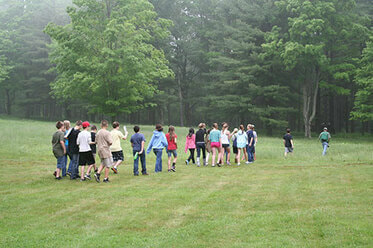
Litchfield Sixth Grade Conservation Education Project: Starting in the early 1960’s, the Litchfield Garden Club funds the cost of bringing White Memorial Education Director Carrie Szwed into Litchfield’s sixth grade classes to provide a five-unit program every spring. Over the years, approximately 4800 sixth-graders have been taught about Connecticut geology and minerals, coniferous trees, animal adaptations, biodiversity and endangered species, invasive species and climate change. The program is capped off by a field day at White Memorial when students apply all their newly-acquired knowledge.
The 6th grade outreach programs are given in the March, April and May. The one hour programs are 3 times a day - 10:15 am, 12.00 pm and 2:15 pm. All LGC members are invited to attend. You must notify Carrie Szwed at White Memorial (860 567 0857 ext.16 or [email protected]) in advance so that the school knows who will be attending. Registration is required.
The 6th grade outreach programs are given in the March, April and May. The one hour programs are 3 times a day - 10:15 am, 12.00 pm and 2:15 pm. All LGC members are invited to attend. You must notify Carrie Szwed at White Memorial (860 567 0857 ext.16 or [email protected]) in advance so that the school knows who will be attending. Registration is required.
Annual Contributions: The Litchfield Garden Club has made small financial contributions to organizations doing important conservation work in our community and state. Recipients in the last decade have included Connecticut Audubon Society, Connecticut Fund for the Environment, Connecticut Land Trust, Housatonic Valley Association, Litchfield Community Garden, Partners for Sustainable Healthy Communities, Litchfield Greenway, Litchfield High School Envirothon Team, Litchfield Hills Greenprint, Litchfield Land Trust, Northwest Conservation District, and River Alliance.
Back to Top
Back to Top
Members doing good work in conservATION!

Connecticut Conservation advocate Martha H. Phillips receives major award from Garden club of America. Phillips has received one of the highest honors bestowed annually by the Garden Club of America (GCA), the Margaret Douglas Medal.
The award, presented to Phillips at the GCA's annual meeting is given for notable service to the cause of conservation education. Read more
The award, presented to Phillips at the GCA's annual meeting is given for notable service to the cause of conservation education. Read more
Martha Phillips was honored with the Tribute Award in Conservation at the FGCCT Awards Meeting at the Aqua Turf Club in Plantsville, CT on October 28, 2015
She prepared two award-winning conservation exhibits which were entered in the Special Exhibits Section at two FGCCT Flower Shows in Hartford. One was awarded a blue ribbon, and the other received the coveted NGC Education Award. Martha is an exemplary ambassador in the conservation field – locally, state-wide, and nationally.”
Back to Top
She prepared two award-winning conservation exhibits which were entered in the Special Exhibits Section at two FGCCT Flower Shows in Hartford. One was awarded a blue ribbon, and the other received the coveted NGC Education Award. Martha is an exemplary ambassador in the conservation field – locally, state-wide, and nationally.”
Back to Top
Conservation Videos of interest
|
Douglas Tallamy is a professor in the Department of Entomology and Wildlife Ecology at the University of Delaware and author of several books including Bringing Nature Home: How Native Plants Sustain Wildlife in Our Gardens and The Living Landscape.
Nature's Best Hope: A New Approach to Conservation That Starts in Your Yard - During his talk, illustrated with lots of colorful photos, he discussed simple steps that each of us can - and must - take to reverse declining biodiversity and explained why we are nature's best hope. Click the video for a copy Doug's talk. Back to Top |
|
Stay in the know on conservation issues
Do you want to “stay in the know” on Conservation issues? – the following links may provide helpful information and resources. The Litchfield Garden Club is not responsible for the content of any site to which we provide links.
Organization involved in Conservation & Environmental Protection in CT
Enforcing Environmental Laws
- Connecticut League of Conservation Voters
- Housatonic Valley Association
- White Memorial Conservation Center
- Rivers Alliance of Connecticut
- Audubon Connecticut
Enforcing Environmental Laws
The Litchfield Garden Club, Inc. ~ PO Box 848 ~ Litchfield, CT 06759
email: [email protected]
email: [email protected]
Copyright © The Litchfield Garden Club, Inc, 2016 All rights reserved


















